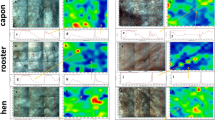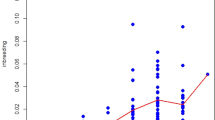Abstract
THE Flemish Giant is the largest breed of rabbit, and at first sight it would appear to be the most important breed for meat production. In practice, however, there is a relative scarcity of breeders who persevere with studs of typical Flemish. (It is essential to distinguish between typical Flemish, as described in the standard, and the many crosses which are often loosely described as ‘Flemish’. The reasons appear later.) The standard for the Flemish Giant1 specifies a large animal of steel-grey colour with white belly fur. No other colour is recognized in Great Britain; but in other countries a wider range is admitted. For show purposes the standard weights of adults are: bucks 11 Ib. or more, and does 12 lb. or more; in ‘intermediate classes’ they must be less than the above weights. Whilst allowing for difficulties in securing great size and weight, together with all the other points required in show stock, the fact that there are not more breeders of a rabbit of this size suggests that there must be some underlying drawbacks.
This is a preview of subscription content, access via your institution
Access options
Subscribe to this journal
Receive 51 print issues and online access
$199.00 per year
only $3.90 per issue
Buy this article
- Purchase on Springer Link
- Instant access to full article PDF
Prices may be subject to local taxes which are calculated during checkout
Similar content being viewed by others
References
Standard. Flemish Giant Rabbit Club, London.
Wilson, W. King, and McCartney, W., "Rabbit Feeding for Meat and Fur", Imperial Bureau of Animal Nutrition, Aberdeen, Technical Communication No. 12 (1940).
Pickard, J. N., "A Preliminary Study of Some of the Factors Influencing the Duration of Pregnancy and Litter Size in the Rabbit," IVth World's Poultry Congr. Papers, Section F, 901 (1931).
Rosahn, P. D., Greene, H. S. N., and Hu, C. K., Proc. Soc. Exp. Biol. and Med., 31, 1214 (1934).
Punnett, R. C., and Bailey, P. G., J. Genet., 8, 1 (1918).
Pease, M. S., J. Genet., 20, 261 (1928).
Castle, W. E., "Size Inheritance in Rabbit Crosses", Carnegie Inst., Washington, Pub. No. 320, 3 (1922).
Wilson, W. King, J. Heredity, 27, 127 (1936).
Wilson, W. King, "Alternative Modes of Inheritance of Steel Grey Coat Colour in Rabbits", VIIth Internat. Genet. Congr., Section D, 1939.
Punnett, R. C., J. Genet., 2, 221 (1912).
Punnett, R. C., J. Genet., 5, 37 (1915).
Punnett, R. C., J. Genet., 23, 265 (1930).
Pap, E., Z. Induktiv. Abstammungs- und Verebungs-lehre, 26, 185 (see 14) (1921).
Onslow, H., J. Genet., 12, 91 (1922).
Hammond, J., "Reproduction in the Rabbit" (Edinburgh: Oliver and Boyd, 1925).
Author information
Authors and Affiliations
Rights and permissions
About this article
Cite this article
WILSON, W. Fertility in Flemish and Smaller Types of Rabbit. Nature 146, 721–722 (1940). https://doi.org/10.1038/146721a0
Issue Date:
DOI: https://doi.org/10.1038/146721a0
Comments
By submitting a comment you agree to abide by our Terms and Community Guidelines. If you find something abusive or that does not comply with our terms or guidelines please flag it as inappropriate.



